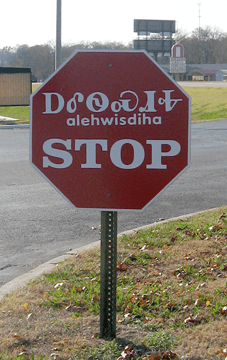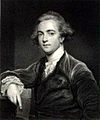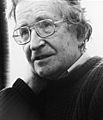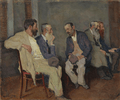Language facts for kids
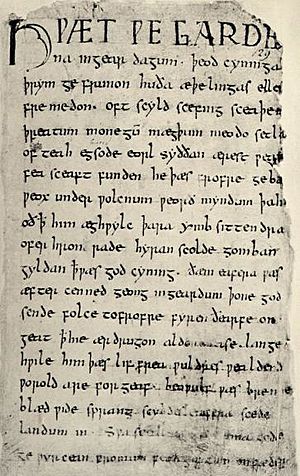
Language is the main way humans communicate with each other. While many animals communicate in different ways, only humans use complex language.
Human language has syntax, which are like special rules for putting words together. These rules help us make clear statements and questions. Language can also change over time, with new words being added to describe new things. Animals, on the other hand, often have a set of calls with fixed meanings.
We can use language by speech, by writing, or by moving our hands to make signs. This means language is more than just any way of communicating. For example, non-verbal communication, like body language, is not considered language. Humans also use language for thinking.
The word "language" can mean a few different things:
- The way a community or country speaks.
- The ability to speak.
- Formal languages used in mathematics, logic, and computing.
- Sign language used by people who cannot hear.
- A subject you might study in school.
UNESCO (a part of the United Nations) has said that about 2,500 languages are in danger of disappearing forever.
Contents
What Makes Human Language Special?
All human languages share certain features that make them different from other ways of communicating.
- Every language has rules that everyone in a community understands and follows.
- Most human languages are based on sound and hearing. For sign language, they are based on vision. The basic sound units, called phonemes, can be spoken by the human voice and heard by the human ear.
- Sounds in language come out in a sequence, one after another, not all at once. Writing copies this by putting marks on paper or a screen in the same order.
- The stream of sounds has small breaks and comes in bigger parts. We call these bigger parts sentences, questions, replies, or comments.
- In many languages, like English, the syntax (or word order) can change the meaning. For example, "the cat sat on the man" means something different from "the man sat on the cat."
- Words can be divided into two main types: content words and non-content words. Content words have a clear meaning, like nouns (e.g., "cat"), verbs (e.g., "sit"), and adjectives (e.g., "happy"). Non-content words help the language work, like "and," "not," or "in." Grammar is the study of how words fit together to create meaning.
- All languages have:
* Sentences with two main parts: nouns and verbs. For example, "Jill is here." * Adjectives to describe nouns. For example, "good food." * Ways to connect ideas. For example, "sink or swim." * Ways to ask questions or give commands. For example, "Get up!" or "Are you ill?"
- Most languages have a written form. Before we had audio recordings, writing was the only way to save spoken information.
- All languages are always changing. New words appear, new ways of saying things develop, and accents change.
How We Learn Language
The ability to learn and use language is something we inherit. Almost all humans are born with this skill. However, which language a child learns depends on the language spoken by their family and community. So, the ability is inherited, but the specific language is learned.
Children have a special time, from about 18 months to four years old, which is super important for learning language. If this period is seriously interrupted, their language skills might be affected. Older people learn languages differently, which is why it's often harder for them to learn a second language as perfectly as they learned their first language.
Different Kinds of Languages
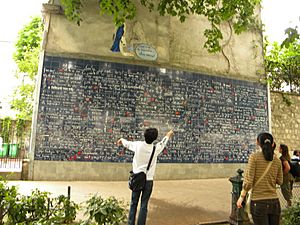
In Mathematics and computer science, people use special created languages called formal languages, like computer programming languages. Some people even think of mathematics itself as a language. Also, some consider musical notation a way of writing down musical language.
The Chinese family of languages has the most native speakers in the world. However, "Chinese" isn't just one language. It's a group of very close dialects, some of which are as different from each other as Romance languages (like Spanish and French) are.
English is often called "the international language" or the world's lingua franca. It's the main second language for many people and is widely used in science, travel, technology, business, diplomacy, and entertainment.
- English as a first language: about 380 million people.
- English as an official second language: up to 300 million people.
- English taught as a second language (without official status): possibly up to 1 billion people.
- Chinese (Mandarin): about 390 million native speakers.
Some languages are made up so that many people around the world can learn them easily. These are called constructed languages. They are not tied to any specific country. One of the most famous is Esperanto, sometimes called "La Internacia Lingvo" (The International Language). Another one, Volapuk, was popular about a hundred years ago but is less used now. Languages like Esperanto, Interlingua, and Ido have mostly replaced it.
One reason Volapuk became less popular is that some of its sounds are hard for people who speak Spanish or English to say.
Related Topics
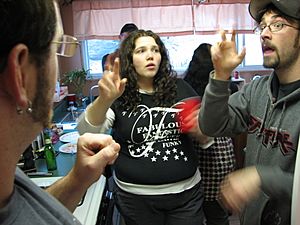
- Alphabet
- Basic English
- English as a foreign language
- English language
- Historical linguistics
- Language families
- Linguistics
- List of languages
- Orthography
- Phonology
- Second language
- Semantics
- Sign language
Images for kids
-
William Jones found connections between Latin and Sanskrit, which helped start the study of historical linguistics.
-
Ferdinand de Saussure developed a new way of studying language called structuralism.
-
Noam Chomsky is a very important language expert from the 20th century.
-
A class at Kituwah Academy, where students learn in English and the Cherokee language.
-
Writing in Swampy Cree using Canadian Aboriginal syllabics, a writing system made for Indigenous Canadian languages.
-
The first page of the poem Beowulf, written in Old English around 800–1100 AD. Even though Old English is the ancestor of modern English, it's very hard for us to understand today.
-
A multi-lingual sign outside the mayor's office in Novi Sad, showing the four official languages of the city.
See also
 In Spanish: Lenguaje para niños
In Spanish: Lenguaje para niños


